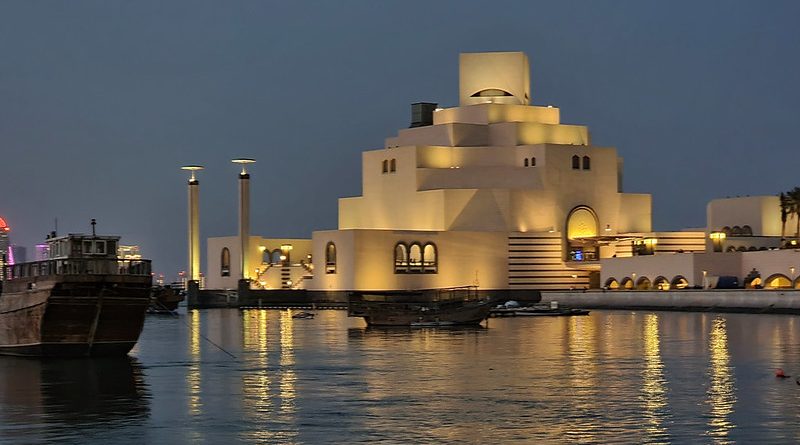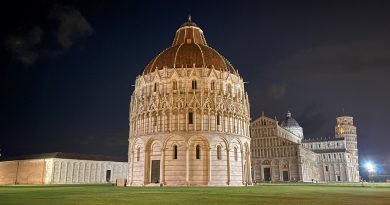Top Ten Sites in Cairo
One of the most culturally and historically significant cities in the world, Cairo is a traveller’s dream. Often synonymous with the defining symbols of Ancient Egyptian civilisation such as the Giza Pyramid Complex, the city is also known as one of the most important Muslim centres in history, often nicknamed ‘the city of a thousand minarets’. Replete with stunning examples of Islamic architecture, Cairo boasts an embarrassment of riches from all over its millennia-spanning history.
Grand Egyptian Museum
Opened in 2024 and already regarded as one of the great museums in the world .It holds more than 100,000 artefacts including several thousand from Tutenkhamun’s tomb, two thousand of which are unique to the museum . It also contains a 5o metre long boat commissioned by the Pharoah Khufu who built the Great Pyramid, and a monumental figure of Ramses II
Giza Pyramid Complex
One of the world’s most famous landmarks, the Giza Pyramid Complex is practically synonymous with Ancient Egyptian civilisation. The last of the Seven Wonders of the Ancient World still surviving, the pyramids are rightfully considered to be amongst the greatest physical feats in human history. Comprised of three pyramids and the Great Sphinx, an immense sculpture, the complex is a short drive away from Cairo’s bustling city centre, but are an absolutely unmissable sight for visitors. The pyramids were all constructed in the third millennium BC. The Great Pyramid of Giza was built around 2560 BC, the Pyramid of Khafre was built in 2570 BC and the Pyramid of Menkaure was built in 2510 BC. Less is known about the construction of the Great Sphinx, with many conflicting theories about its origins and purpose of construction. An absolutely awe-inspiring sight to behold due to the age and ingenuity of the structures, the Giza Pyramid Complex is the defining image of Ancient Egyptian Civilisation and one of the most important sites of all time.
Citadel of Cairo
One of the most important sites from the city’s Medieval past, the Citadel is a focal structure within the city’s Islamic area. Initially built by the city’s first Sultan Saladin, the complex was developed over several centuries, with vital contributions from An-Nasir Muhammed in the 14th Century and Muhammed Ali in the 19th Century. While little remains of the original Medieval complex, the Citadel remains an important encapsulation of the last millennium of the city’s extensive history. The Mosque of Muhammad Ali, arguably the site’s most famous monument, is one of the city’s most impressive sights.
Museum of Islamic Art
One of Egypt’s finest museums, the Museum of Islamic Art, Cairo boasts a significant and extensive collection of artefacts and artwork from a plethora of different periods and regions throughout the Islamic World. Having been operational for over 100 years since 1903, the museum is believed to possess over 100,000 distinct objects, with several more stored elsewhere. Arguably the finest museum in the world of its kind, the Museum of Islamic Art is an essential destination for visitors to the city, especially those with a vested interest in history
Al-Azhar Mosque
One of the oldest mosques still functioning, the Al-Azhar Mosque’s extensive history can be traced back to 972. The first of many mosques in the city of Cairo, Al-Azhar is one of the city’s most iconic and important historical sites. Due to the sheer amount of time the mosque has existed, its significance and functionality has shifted over the centuries. In addition to the mosque’s physical splendour, it is also known for its adjacent University of the same name, which is widely considered to house one of the most important Islamic libraries in the world. The mosque, in modern times, is an iconic symbol of the Islamic religion in Egypt and by extension the entire Muslim world.
Sultan Hassan Mosque
One of the standout buildings in Cairo’s Old City, the Sultan Hassan Mosque is known for its immense scale and the high speed at which it was built. It was believed that it was constructed over a three-year period without a single day’s rest. It remains one of the largest mosques in the world, its area covering nearly 8000 squared metres. Built in the mid-14th Century, the Mosque is without a doubt one of Cairo’s most iconic buildings.
Abdeen Palace
One of the city’s more recent iconic landmarks, the Abdeen Palace was built in 1873, and currently functions as the main base of operations for the country’s President as well as one of his official residences. In addition, the palace also functions as a museum, with a number of different sub-sections. These include the Arms Museum, focusing on old weapons and the Royal Family Museum, which focuses on the history of the country’s ruling elite. While you will find many other more spectacular structures in the city, the Abdeen Palace offers an informative glimpse into the country’s more recent history.
Tahrir Square
Very much the hub of modern-day Cairo, Tahrir Square is worth visiting less for its physical qualities but more for its huge significance in the country’s recent history. Most notably, the Square reached international prominence as the origin of the 2011 Egyptian Revolution, a key moment in the country’s history and a focal aspect of the wider movement, which became known as the Arab Spring. The square has served as the location for a number of additional protests in the intervening years.
Rhoda Island
Often overshadowed by the more affluent Zamalek Island, Rhoda Island is far more interesting, both on a cultural and a historical level. The island is home to a number of spectacular historical ruins and artefacts. Monasterili Palace, located on the island, houses the famous Cairo Nilometer, an ancient tool utilised to measure the Nile River’s water levels. More recent ruins include the opulent Al Manyal Palace, an important relic of the Mohammed Ali Dynasty. A vast treasure trove with a variety of sights from the full extent of the city’s history, Rhoda Island is not worth sleeping on.
Mosque of Al-Hakim
Another hugely significant symbol of Islamic Cairo, the Mosque of Al-Hakim is one of the oldest sites of its kind within the city, consecrated over a thousand years ago in 928 during the reign of the city’s founder Gawhar Al-Siqilli. Known for its distinct minarets and spectacular entrance, it is considered to be one of the most iconic and impressive feats of Fatimid architecture. It remains a functional mosque and one of the most important gathering places for the city’s Muslim population.
Bab Zuweila
Another significant site of Fatimid architecture, the Bab Zuweila is one of the three surviving city gates of Cairo’s Old City. It is often considered to be the most impressive of the three. Visitors are permitted to ascend the gate, which provides a beautiful view of the city’s Islamic area. One of the most important ruins in a city full of them, Bab Zuweila’s impressive views make it a sight that is not to be missed.
More Information
Destination – Egypt




